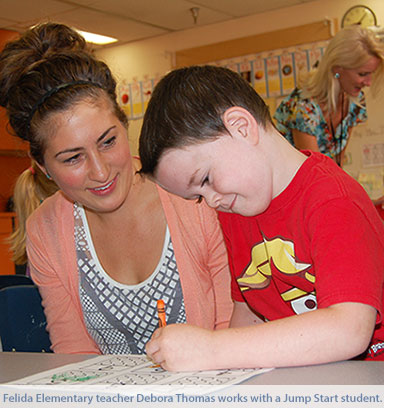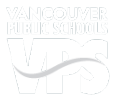 Visit a VPS kindergarten classroom on the very first day of school and you might be surprised. Among the colorful rugs and signs with letters of the alphabet, you’d see brand-new kindergarteners raising their hands before they speak and calmly lining up for recess. You’d see confidence and very few tears as they say goodbye to their parents. You’d probably be impressed with their playground behavior and ability to follow directions, too. Before the end of the day, you might ask, how do they know this?
Visit a VPS kindergarten classroom on the very first day of school and you might be surprised. Among the colorful rugs and signs with letters of the alphabet, you’d see brand-new kindergarteners raising their hands before they speak and calmly lining up for recess. You’d see confidence and very few tears as they say goodbye to their parents. You’d probably be impressed with their playground behavior and ability to follow directions, too. Before the end of the day, you might ask, how do they know this?
The transition looks effortless because before school even started, many kindergarteners already had acclimated to school routines thanks to the Jump Start program, one of our Design II priorities and a National School Boards Association Magna Award winner.
This summer, for the first time, Jump Start was offered as a 17-, 10- or five-day program at all 21 elementary schools. Those extra days and weeks might not sound significant, but they are impactful.
Jump Start students spend two-and-a-half hours each day getting to know their school, their peers and their teachers—84 percent of whom teach Jump Start in the same school as their regular kindergarten assignment. Meanwhile, students prepare for the upcoming 180 days of instruction and work toward benchmarks through standards-based learning activities.
Parents are supported, too. Conferences build relationships that enable them to engage in their children’s education from the very beginning. And with the help of Family-Community Resource Center coordinators, parents become familiar with school operations, including lunches and buses.
We’ve invested in Jump Start for all these reasons, but also because Jump Start can be a bridge over achievement gaps for low-income students and English language learners. Half of the incoming kindergarteners enrolled in the 17-day program last summer were low income, and 34 percent were English language learners.
The students from these two groups who fully participated in the program skirted the proverbial gap. More of these students entered kindergarten ready for benchmark-level instruction compared to their peers who didn’t fully participate. Fewer have required intensive interventions.
Jump Start students also went on to have better attendance rates than their non–Jump Start peers. A recent study by the Baltimore Education Research Consortium tells us that poor attendance in the first month of school can predict chronic absenteeism for the entire year. Jump Start students, on average, have had lower chronic absenteeism rates and higher satisfactory attendance rates.
But if you ask the students themselves, here’s what they might tell you about Jump Start:
At Jump Start we learned calendar.
My favorite part of Jump Start was learning letters and sounds.
At Jump Start I met new friends.
In those voices you can hear the joy for learning and for being in school—and those too will propel students forward.
Of course no success is achieved alone. Our board of directors supports Jump Start through oversight of our Design II strategic plan progress. The Foundation for Vancouver Public Schools has donated a total of $225,000 to the program in the past three years. And kindergarten teachers, principals and staff have recognized the benefits of the program and committed their time and efforts. With everyone working together, Jump Start can help prevent achievement gaps from forming and create a strong foundation for a lifetime of learning.
Take care,

